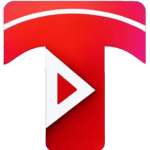- Tubelator AI
- >
- Videos
- >
- Science & Technology
- >
- Jonathan Ross on Computing Innovation and Founding Groq: Agents, Bias, and Control
Jonathan Ross on Computing Innovation and Founding Groq: Agents, Bias, and Control
Learn about Jonathan Ross's journey from leaving Google to founding Groq. Discover insights into the world of computing innovation, agents, bias, and control in this insightful conversation.
Video Summary & Chapters
1. Introduction 🌟
Meet Jonathan Ross, founder of Groq
2. Founding Groq 🚀
Jonathan's journey from Google to founding Groq
3. Innovation Decision 🤔
Reasons behind leaving Google for entrepreneurship
4. Groc Architecture 💡
The inception of Groq's unique chip architecture
5. Compiler Development 🖥️
Early stages of Groq's compiler development
6. Inference Speed 🚄
Exploring Groq's impressive inference speed capabilities
7. Memory Optimization 🧠
Understanding the strategy behind Groq's memory design
8. The Efficiency of Assembly Line 🚗
Comparing car production to chip manufacturing efficiency.
9. GPU vs. Groq Chip Speed ⏱️
Explanation of why GPUs are slow at producing tokens.
10. Introduction to Groq Cloud ☁️
Details on starting with Groq Cloud and its benefits.
11. GROC Hardware Business Model 💼
Discussion on the potential business model for Groq hardware.
12. Compute as the New Oil 💻
Insights on the future of compute and its importance.
13. The Evolution of Technology 🌐
From the internet to generative AI.
14. Advice for AI Entrepreneurs 💡
Choosing the right focus in AI startups.
15. Challenges in Building AI Chips 💻
Obstacles faced by AI chip startups.
16. Predicting Success in AI 📈
Challenges in predicting AI model success.
17. The Future of AI Agents 🤖
Exploring the potential of AI agents.
18. Inference Speed and Agents 🚀
Impact of inference speed on AI agents.
19. Understanding the Impact of Media 📺
Exploring the influence of TV and social media on emotions and curiosity.
20. Embracing Generative AI 🤖
Discussing the positive impact of generative AI on curiosity and nuanced perspectives.
21. Controlling Algorithms and Bias 🧠
Addressing concerns about controlling algorithms and the potential biases in AI models.
22. Preserving Human Agency in AI Age 🛡️
Exploring Groq's mission to ensure human control in the era of AI.
23. Empowering Decision-Making 🤔
Focusing on enabling individuals to make informed decisions with AI assistance.
24. Curating Information Challenges 📚
Discussing the importance and complexities of curating AI models and information.
Video Transcript
All right, welcome Jonathan Ross, founder and CEO of GROC, GROQ.
I'm very excited to talk to you today.
I interviewed two of your amazing engineers, Andrew Lang, Igor Arsovsky, VP of Compiler Software
and Chief Architect in Fellow, but now we get to talk to the man himself, Jonathan Ross. Thank you,
welcome. Very happy for you to be here. Hello, thanks for having me. Great to be on your show.
So I have a handful of questions.
Some of them span technical.
Some of them go into the business side.
So really excited to hear your take on some of them.
But first, coming from a founder myself,
I want to know a little bit about the founding story
of Groc.
Previously, you were at Google.
You basically invented the TPU, the TensorFlow processing
unit at Google, which is their custom silicon
running a lot of their software.
Why did you decide to leave?
What did you think that you could do outside of Google that you couldn't do inside of Google and how was that decision come to?
Well, I love my time at Google. It was amazing and
Got to build the Google TV which was the chip that powers all the AI there and
Learned a lot and then I was in Google X and the rapid e-vow team which is the team that comes up with the next things to do and
I kept referring to the the TV you effort as a startup within Google and I
and didn't quite realize at the time how constraining it is to be in a large company.
This is relevant right now and today because so many people are wondering whether or not
they should go and start their own startups.
It's hard to make that decision.
Well, the thing that really cinched it for me was when I realized in order for me to do
something inside, it was sort of like VC.
I had to get someone to fund it.
But inside, I had to get a whole bunch of people to say yes and it was an AND across all
of them.
Whereas leaving, it was an OR.
And there were more people.
There were thousands of VCs and any one of them could fund it.
So I could be more ambitious, I could be more bold than trying to fit in sort of the eye
of the corporate needle.
So if you're thinking about whether or not you want to start something yourself, the
question is, do you feel constrained? And if you do, you're probably better off
going and doing your own startup. Did you have the idea for the GROC
architecture at Google and you couldn't get the green light and that's why
you decided to leave or was there some other reason? No actually in fact I
didn't even know I was going to do a chip when I was leaving because I'd been
doing so many other things and for a while I actually set a record for the
the best image classification model. So I was doing machine learning but I was
also doing like bio, I was doing mechanical engineering, all sorts of other things.
Around the time that I left, what happened was the TPU paper got published.
And all the VCs wanted to talk about was an AI chip.
And one of them asked me, what would you do differently?
And I'm like, well, I'd make the software much easier to use because it was almost
impossible.


 Install Tubelator On Chrome
Install Tubelator On Chrome











